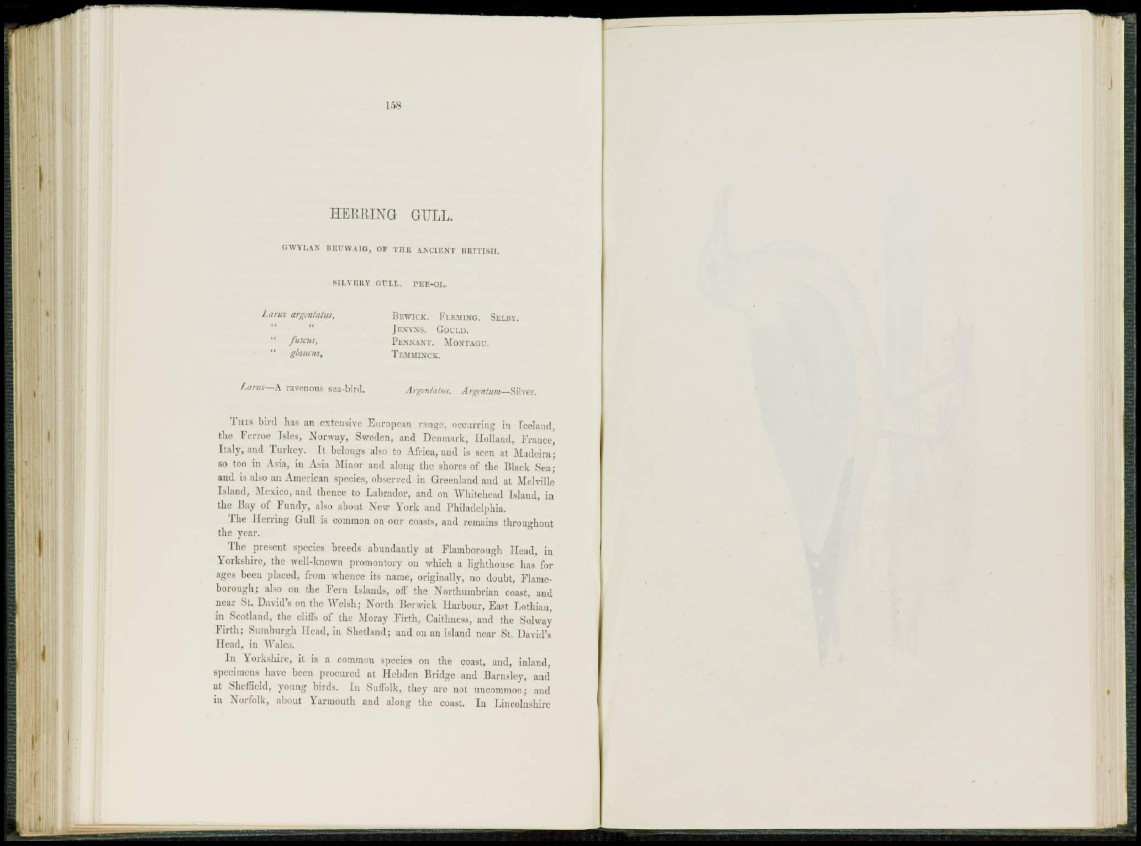
H E R R I N G G U L L.
GWYLAN BEUWAIG, OF THE ANCIENT BRITISH.
SILVERY GULL.
Larus argtniatus, BEWICK. FLEMING. SELHV.
" JENYNS. GOULD.
fuscus. PENNANT. MONTAGU.
'* glaiuits, TEMMINCK.
Lams—A. ravenous sea-bird. Argenia/us. Argcntum—Silver.
Tins bird has an extensive European range, occurring in Iceland,
the Ferroe Isles, Norway, Sweden, and Denmark, Holland, France,
Italy, and Turkey. It belongs also to Africa, and is seen at Madeira;
so too in Asia, in Asia Minor and along the shores of the Black Sea;
and is also an American species, observed in Greenland and at Melville
Island, -Mexico, and thence to Labrador, and on Whitehead Island, in
the Hay of Fundy, also about New York and Philadelphia.
The Herring Gull is common on our coasts, and remains throughout
the year.
The present species breeds abundantly at Flamborough Head, in
Yorkshire, the well-known promontory on which a lighthouse has for
ages been placed, from whence its name, originally, no doubt, Flameborough;
also on the Fern Islands, off the Northumbrian coast, and
near St. David's on the Welsh; North Berwick Harbour, East Lothian,
in Scotland, the cliffs of the Moray Firth, Caithness, and the Solway
F i r t h ; Sumburgh Head, in Shetland; and on an island near St. David's
Head, in Wales.
I n Yorkshire, it is a common species on the coast, and, inland,
specimens have been procured at Hebden Bridge and Barnsley, and
at Sheffield, young birds. In Suffolk, they are not uncommon; and
in Norfolk, about Yarmouth and along the coast. In Lincolnshire